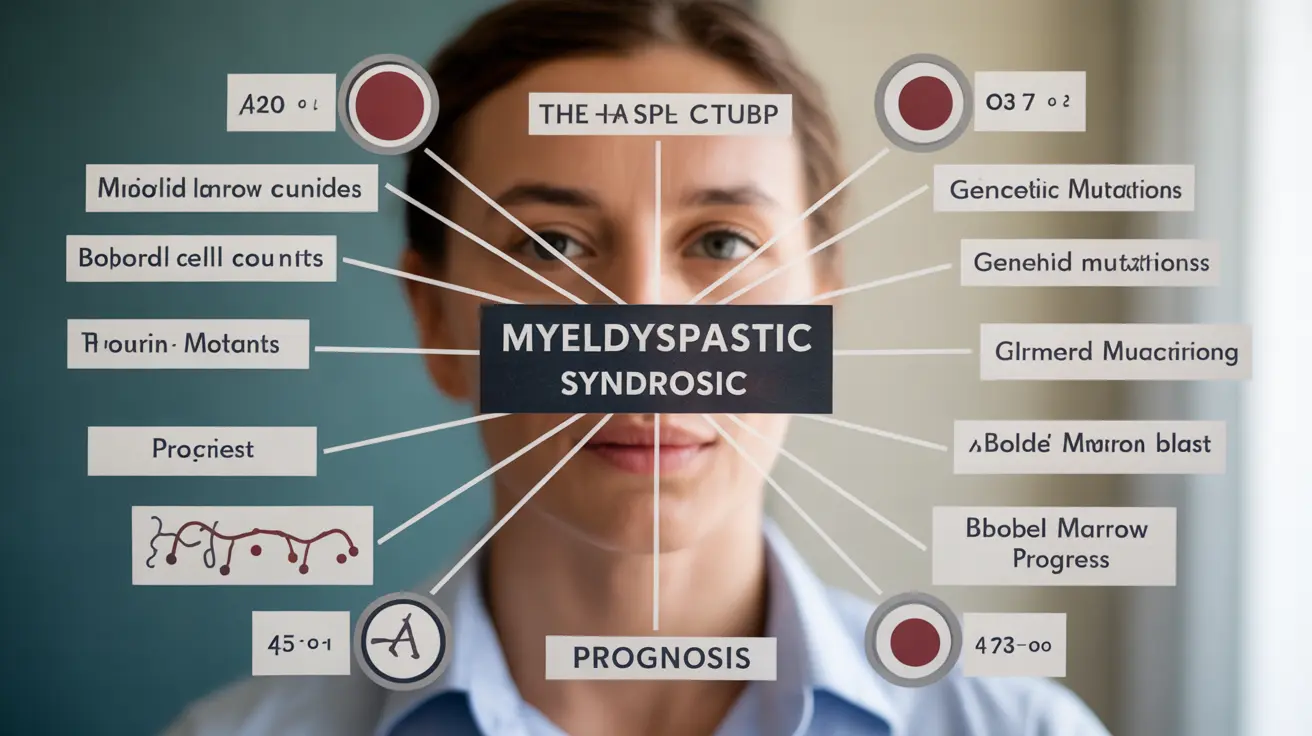Being diagnosed with myelodysplastic syndrome (MDS) can raise many questions about life expectancy and prognosis. While survival times vary significantly among individuals, understanding the factors that influence MDS progression and life expectancy can help patients and their families make informed decisions about treatment and care.
This comprehensive guide explores the various aspects that affect survival with MDS, including risk levels, treatment options, and prognostic indicators. It's important to note that modern treatments and ongoing research continue to improve outcomes for many patients.
Risk Levels and Life Expectancy
MDS survival rates vary significantly based on risk classification. The International Prognostic Scoring System-Revised (IPSS-R) categorizes patients into five risk groups:
- Very Low Risk: Median survival of 8.8 years
- Low Risk: Median survival of 5.3 years
- Intermediate Risk: Median survival of 3 years
- High Risk: Median survival of 1.6 years
- Very High Risk: Median survival of 0.8 years
These figures represent statistical averages, and individual outcomes can vary considerably based on multiple factors, including age, overall health, and response to treatment.
Factors Affecting MDS Prognosis
Several key factors influence life expectancy in MDS patients:
- Age and overall health status
- Specific genetic mutations present
- Blood cell count levels
- Percentage of blast cells in bone marrow
- Chromosome (cytogenetic) abnormalities
- Response to treatment
Understanding these factors helps healthcare providers develop more accurate prognoses and personalized treatment plans for each patient.
Progression to Acute Myeloid Leukemia
The risk of MDS progressing to acute myeloid leukemia (AML) varies based on the patient's risk category. Approximately 30% of MDS cases eventually transform into AML, though this percentage is higher in higher-risk patients and lower in lower-risk patients.
When MDS progresses to AML, the prognosis typically becomes more challenging, with survival times generally shortened. Early intervention and appropriate treatment can help delay or prevent this progression in some cases.
Treatment Options and Impact on Survival
Various treatment options can potentially extend survival for MDS patients:
- Stem cell transplantation (potentially curative for eligible patients)
- Hypomethylating agents
- Lenalidomide for specific genetic subtypes
- Supportive care measures
- Blood transfusions
- Growth factors
The effectiveness of these treatments varies among individuals, and some patients may achieve longer survival times than initially predicted with appropriate therapeutic intervention.
Frequently Asked Questions
How long does it typically take to die from myelodysplastic syndrome (MDS) based on risk levels?
Survival times vary significantly based on risk levels, ranging from approximately 8.8 years for very low-risk patients to less than 1 year for very high-risk patients. Individual outcomes can differ based on personal factors and response to treatment.
What factors affect life expectancy in patients diagnosed with MDS?
Life expectancy is influenced by age, overall health, genetic mutations, blood cell counts, bone marrow blast percentage, chromosome abnormalities, and response to treatment. These factors collectively determine a patient's risk category and potential outcomes.
How likely is MDS to progress to acute myeloid leukemia (AML), and how does this impact survival?
Approximately 30% of MDS cases progress to AML, though this rate varies by risk category. Progression to AML typically results in a more challenging prognosis and shorter survival times, making early intervention crucial.
What treatments are available for MDS, and can they improve survival time?
Available treatments include stem cell transplantation, hypomethylating agents, lenalidomide, supportive care, blood transfusions, and growth factors. These treatments can potentially extend survival, with stem cell transplantation offering the only potential cure for eligible patients.
How is the prognosis of MDS determined using scoring systems like IPSS-R or WPSS?
These scoring systems evaluate factors such as blood counts, bone marrow blast percentage, cytogenetic abnormalities, and transfusion dependency to categorize patients into risk groups. The IPSS-R system provides more refined risk stratification with five risk categories, helping to predict survival outcomes more accurately.




